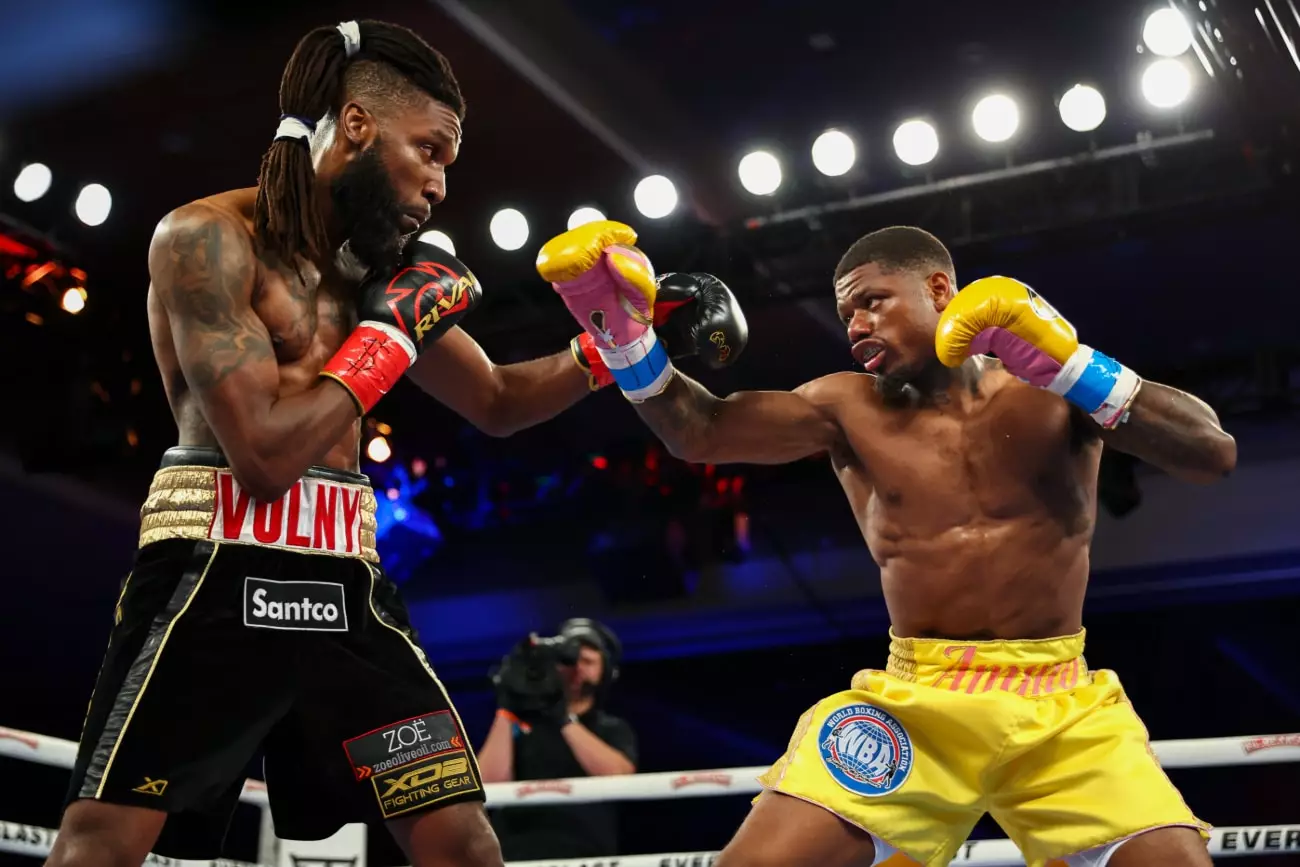On a bustling night in Orlando, Florida, Ammo Williams faced off against Patrice Volny in a middleweight clash that ultimately showcased differing styles rather than clear superiority. While Williams emerged victoriously with a unanimous decision, the nature of the bout left many questioning not just the outcome but also Williams’ standing in a highly competitive division. The fight, broadcast on DAZN, was characterized by a relentless work rate from the 28-year-old Williams, who appeared to rely more on volume than on the effectiveness of his punches.
While one might have expected a fluid display from the Eddie Hearn-promoted boxer, Williams seemed intent on outworking Volny rather than demolishing him. The latter, at 35 years old, surprisingly resonated with the crowd as he connected with heavier, more precise blows. Fans, dissecting the event in real-time on social media, found themselves torn. Should the fight be judged on sheer output or the more significant impact of Volny’s punches? The debate is paramount in boxing, where the interpretation of scoring can often lead to subjective discord.
Judging Decisions and Future Prospects
The three judges’ scorecards, which favored Williams 118-110, 116-112, and 115-113, sparked frustration among viewers who felt that a draw would have been a more accurate reflection of the competitive nature of the fight. One cannot help but wonder—are the criteria for scoring bouts truly reflective of the sport’s nuances? The glaring disparity in scoring hints at a broader issue within boxing judging and raises an essential question about the transparency and consistency of scoring methodology.
In light of this performance, Eddie Hearn’s post-fight musings about elevating Williams to title contention seem premature, if not irresponsible. While optimism is a valuable asset in promoting fighters, it is equally crucial to recognize when an athlete is not yet ready for the steps that truly matter. The middleweight division is a minefield, housing formidable champions like Erislandy Lara and Carlos Adames, against whom Williams may struggle despite his apparent potential.
Berlanga’s Resurgence: Fact or Fiction?
On the same card, Edgar Berlanga made headlines by returning to form with a first-round knockout of Jonathan Gonzalez-Ortiz, yet one must critically assess the quality of his opponent. This swift and decisive victory suggests a resurgence of power for Berlanga, but it also serves as a stark reminder of the carefully curated matchups many fighters have historically faced early on. Those invested in the sport should question whether this marked comeback is genuinely indicative of Berlanga’s skills or merely a return to executing what he does best against inferior competition.
In the short term, both Williams and Berlanga are being propelled into the conversation for future big fights. However, a discerning fanbase realizes that victory on such a platform does not guarantee merit. It raises the integral conversation about fighter management and the ethical lines in promotion. Are we witnessing genuine talent flourishing, or merely products of hype?
As both warriors eye future bouts, the boxing world watches with a mix of skepticism and hope, knowing well that in this sport, the only constant is unpredictability.

